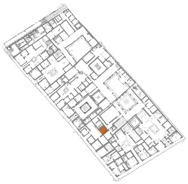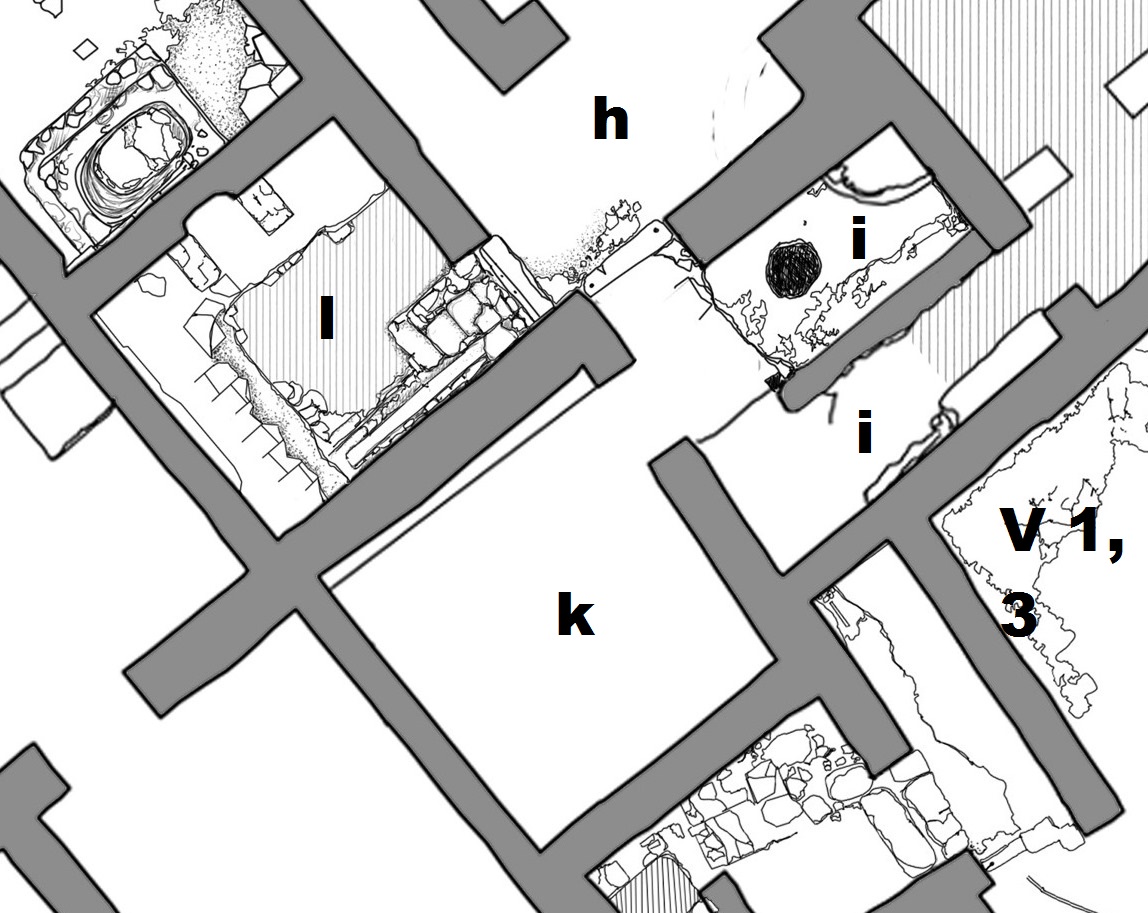Room l (culina)
Description
Thomas Staub
The kitchen l, is located on the north-western part of the house. Just as the other rooms in this area, this room is part of the enlargement of the Casa del Torello in iulian-claudian times. The hearth bench in front of the western wall identifies the room as the kitchen of the house. The bench continuous around the corner and in front of the northern wall, but here it served as a praefurnium for the bath suite in rooms 19 and 20. Along the south wall of the kitchen the drain channel from the water outlet in the southeastern corner of room h, already mentioned above, continues towards the west. It probably continued underneath the floor level of the adjacent house of Tofelanus Valens (V 1,28). Since no cover for this channel has been found, it seems quite probable that it might have been open, also serving as a waste channel for the waste from the kitchen.
The hearth bench is approx. 0.95 m high and 0.85 m deep and runs along the entire width of the W and N walls. The bench shows two arched niches under the surface on both sides, which probably served for the storage of charcoal or wood for the hearth and the praefurnium. A further niche in the lower part of the east wall turned out to be not another storage zone but rather, a niche that allowed easier access to the first main water distribution box on the ingoing line, found here. Finally, another, this time covered, drain was found underneath the northern niche at the east side, running in an east-west direction, probably for the waste water from the baths. This channel continues westwards, probably under the floor level of the adjacent Casa di Tofelanus Valens (V 1,28). In the north wall, a niche was inserted above the bench. It is rectangular in elevation and crowned by a triangle. The boiler for the hot water for the adjacent caldarium was probably situated there.
This area of the house was part of the absolute first excavations carried out in Pompeii during April 1748 (Fiorelli 1875, p.419 and plans by La Vega 1810 and Giosué Russo 1817), soon thereafter reburied and re-excavated probably sometimes between 1876 and 1878, not documented.
Dimensions: 3.15 - 3.30 m x 2.90 - 295 m = 9.43 m²


